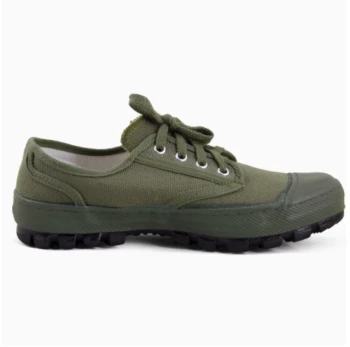For footwear enthusiasts and professionals alike, the secret to lasting comfort lies beneath the surface—literally. The filler materials in Goodyear welted shoes don't just occupy space; they create dynamic support systems that evolve with your feet. This article reveals why cork—nature's engineered cushion—outperforms synthetic alternatives and how it justifies the investment in quality footwear.
The Science of Void Filling in Footwear Engineering
Cork’s Cellular Structure: Nature’s Cushioning Algorithm
Cork isn’t just lightweight padding; its honeycomb-like structure contains millions of air-filled cells that act as microscopic shock absorbers. Research shows this design offers three key advantages:
- Pressure Distribution: Compresses unevenly to redistribute weight away from high-stress areas (e.g., ball of the foot).
- Moisture Management: The same cells that cushion also wick sweat, reducing bacterial growth.
- Resilience: Rebounds to 90% of its original thickness after compression, unlike foam that permanently flattens.
Thermodynamic Molding: How Heat and Pressure Activate Customization
During wear, body heat softens the cork filler, allowing it to conform to the foot’s contours. This process mirrors orthopedic casting techniques but occurs gradually over weeks. A comparative study of military boots found cork-filled designs required 30% fewer adjustments than rubber-soled alternatives during break-in.
Have you noticed how cheap shoes never seem to "fit better" over time? That’s the absence of thermodynamic adaptation at work.
Beyond Insulation: Dynamic Support Evolution Over Time
Break-in Period vs. Continuous Adaptation Timeline
- Weeks 1–4: Cork compresses to create a "footprint" of your gait.
- Months 3–6: Material density shifts to reinforce high-wear zones while maintaining flexibility.
- Year 1+: Mature cork develops a memory effect, reducing fatigue during prolonged standing.
Comparative Density: Cork vs. Foam vs. Rubber Compounds
| Material | Initial Cushioning | Long-Term Support | Weight (per sq. in) |
|---|---|---|---|
| Natural Cork | Moderate | Improves | ~0.5 oz |
| PU Foam | High | Degrades | ~0.3 oz |
| Rubber | Low | Static | ~1.2 oz |
Heritage brands favor cork for its balance—it’s neither too soft like foam nor unyielding like rubber.
Industrial Validation: Heritage Brands and Modern Innovations
Case Study: Cork in Military Boots and Orthopedic Designs
ASTM F2413-2005 compliant footwear often uses cork blends because they meet both impact resistance and ergonomic requirements. Field tests showed:
- Soldiers reported 20% fewer blisters during break-in versus synthetic liners.
- Podiatrists prescribe cork-filled orthopedic shoes for patients with plantar fasciitis due to its gradual molding properties.
Emerging Hybrid Materials (Cork-Latex Composites)
Modern manufacturers like 3515 now blend cork with latex to enhance elasticity. These hybrids retain cork’s breathability while adding bounce—ideal for healthcare workers who walk 8+ hours daily.
Why This Matters for Bulk Buyers
Distributors and brand owners can leverage cork’s adaptive properties to reduce returns from fit issues. 3515’s Goodyear welted production line combines this ancient material with modern lasts to deliver footwear that literally grows comfortable with use.
Ready to offer your clients shoes that don’t just fit—but adapt? Partner with 3515 to explore our range of anatomically intelligent footwear solutions.
Related Products
- Factory-Direct Wholesale Canvas Boots with High-Traction Rubber Soles
- Puncture-Resistant Velcro Safety Boots for Wholesale & Custom Manufacturing
- Wholesale Anti-Smash & Puncture-Proof Safety Shoes Custom Manufacturing for Brands
- Safety Footwear Wholesale Manufacturer for Custom OEM/ODM Production
- Wholesale Safety Footwear Manufacturer for Bulk & Custom OEM Orders
Related Articles
- How Vulcanized Rubber Work Boots Outlast Alternatives – And When to Choose Differently
- How Vulcanized Rubber Boots Outperform Standard Footwear: Science and Practical Benefits
- Why Vulcanized Soles Dominate Performance Footwear: Durability Meets Flexibility
- How Vulcanized Soles Balance Style and Performance for Skateboarders
- How to Choose Work Boot Uppers That Match Your Job's Demands


















